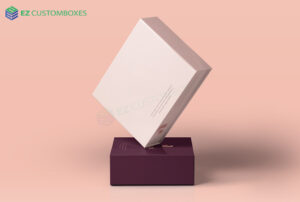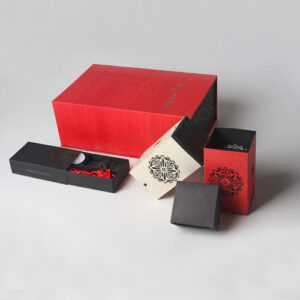
The packaging industry has always been vital to global commerce, serving as the bridge between manufacturers and consumers. From protecting products during transport to creating first impressions in retail, packaging plays an essential role in a product’s success. In recent years, the role of technology has transformed packaging from a purely functional element into an integral part of marketing, sustainability, and product protection. With innovations such as smart packaging, automation in production, and advancements in material science, technology is rapidly revolutionizing the packaging sector. In this research-based exploration, we will delve into how various technological advancements are reshaping the packaging industry, with a focus on materials like cardboard and cardstock paper, the rise of e-commerce packaging needs, and industry-specific solutions like strawberry boxes and playing card dimensions.
Advancements in Material Science and Sustainability
One of the most significant technological innovations in packaging has been the development of new materials that enhance both sustainability and performance. A key example of this is cardboard, which is increasingly being engineered for greater durability while being recyclable and eco-friendly. Cardboard is made from a combination of wood pulp or paper fibers, typically derived from trees, although it can also be made from recycled materials. Through technological advancements, manufacturers now create more robust, yet lightweight versions of cardboard that can better withstand the rigors of transportation and handling. Companies like WestRock, a leading packaging company in the USA, have made strides in using renewable resources to produce high-quality, sustainable packaging solutions, reducing the reliance on plastic-based materials and lowering the carbon footprint of packaging.
Alongside these innovations, packaging companies are also exploring alternative materials that are more biodegradable or compostable. Cardstock paper, which is thicker and more durable than traditional paper, is being utilized for premium packaging and branding applications. Cardstock paper has become a popular choice for high-end products like invitations, business cards, and custom packaging solutions. With new technological methods, cardstock is being produced with more precision, providing excellent printability and surface finishes like gloss or matte, which are crucial for creating a visually appealing customer experience. As sustainability becomes a major focus in the packaging industry, technology is playing an instrumental role in shifting from single-use plastics to recyclable, biodegradable materials like cardboard and cardstock paper, aligning with global environmental goals.
The Rise of Smart Packaging
Another technological revolution in the packaging industry is the rise of smart packaging, which merges packaging with Internet of Things (IoT) technology. This integration has vastly improved product tracking, quality control, and consumer engagement. Smart packaging can incorporate sensors, QR codes, RFID tags, and even augmented reality (AR) to enhance the consumer’s experience and the product’s journey through the supply chain. For example, smart packaging can include sensors that track the temperature and humidity of products during transportation, ensuring that perishable goods like food or pharmaceuticals are kept in optimal conditions.
One key advantage of smart packaging is its ability to monitor the freshness of products. For example, companies using strawberry boxes are now incorporating smart sensors that alert consumers if the product is near expiration or if the temperature deviates from the ideal range. These innovations help reduce food waste by providing consumers with accurate, real-time information about the condition of the product they are purchasing. Furthermore, smart packaging provides manufacturers with real-time data on the product’s journey, improving logistics efficiency and reducing the likelihood of spoilage or damage. Additionally, it enables greater consumer interaction, where QR codes on packaging can provide detailed information about the product, the company, or promotional offers.
The packaging company in the USA are leading the charge in these technological innovations, integrating smart packaging solutions to offer transparency, improve consumer satisfaction, and streamline supply chain operations. This technology is not only improving the quality of packaging but also driving a deeper connection between brands and consumers, fostering loyalty through interactive experiences. As this trend grows, it’s expected that the future of packaging will see even more integration of technology, with further capabilities for personalization and real-time data collection.
Automation and Artificial Intelligence in Packaging Production
Technology in packaging production has also advanced significantly through automation and artificial intelligence (AI). Packaging plants are increasingly using automated systems for sorting, filling, sealing, and labeling products, which reduces labor costs, minimizes human error, and increases production speed. These automated processes rely on robotics, computer vision systems, and AI to ensure precision and efficiency. For example, companies packaging products like playing cards can use automated systems to precisely match the playing card dimensions to the packaging size, ensuring that every box is the perfect fit. This not only improves the overall presentation but also minimizes the risk of product damage during transportation.
Automation also allows for the creation of highly customized packaging solutions at scale. AI-powered systems can analyze data from previous production runs to optimize packaging design, material use, and shipping logistics, reducing waste and improving efficiency. For instance, manufacturers can use AI to determine the ideal packaging material thickness for different types of products, reducing the environmental impact while ensuring safety and cost-effectiveness. This level of precision and customization would have been impossible without technological advancements in automation.
In addition to improving production efficiency, these technological advancements help reduce errors and improve consistency. For example, automated systems ensure that each pack of cigarettes, whether it is a standard pack or one with specialty dimensions, contains the precise number of cigarettes in a pack (typically 20 in most regions). The packaging of such products requires attention to detail, and automation ensures uniformity across the production line, which is vital for maintaining brand integrity.
The Impact of E-Commerce on Packaging Innovation
With the rapid rise of e-commerce, packaging has had to adapt to new challenges and consumer demands. In the past, packaging was primarily designed for in-store display and shelf life; today, packaging must also protect products during long-distance shipping. The shift to e-commerce has led to the development of packaging solutions that are lightweight, secure, and able to withstand the handling and transportation conditions associated with online sales. Packaging companies in the USA have had to rethink packaging designs to ensure products are well-protected but not unnecessarily bulky, minimizing both shipping costs and environmental impact.
Technology has been a major enabler in addressing these challenges. For instance, e-commerce packaging solutions like flat-pack boxes are being designed with automated equipment that optimizes packaging size, material, and strength for individual shipments. For fragile products, such as electronics, technology-driven solutions like air cushions and foam inserts have been developed to ensure the product remains intact during transit. Similarly, playing card dimensions can be custom-fit to smaller, space-saving packaging that allows for more efficient shipping. As online shopping continues to dominate, these packaging innovations not only improve customer satisfaction but also offer more environmentally conscious solutions, aligning with the growing demand for sustainable packaging.
Moreover, the rise of subscription box services has increased the demand for personalized, branded packaging that can create a unique and engaging unboxing experience for consumers. Brands are leveraging digital printing technologies and smart packaging to create highly customized boxes and packaging inserts, providing a seamless and memorable experience that encourages brand loyalty.

The Future of Packaging: Integration with Emerging Technologies
Looking ahead, the future of packaging lies in the deeper integration of emerging technologies such as blockchain and artificial intelligence. Blockchain could be used to provide more transparency in the supply chain, allowing consumers to trace the origin of the products they purchase and ensuring authenticity. This technology could also be used to track packaging materials, ensuring they are ethically sourced and that the entire production process is environmentally responsible.
In addition to blockchain, artificial intelligence (AI) will continue to play a pivotal role in personalizing packaging designs and optimizing the supply chain. AI-powered systems will be able to predict trends, recommend packaging innovations, and automate the design process for packaging companies. These systems will likely be used to develop more intuitive packaging that adapts to the specific needs of each product, enhancing protection, presentation, and sustainability.
Conclusion
Technology has become a driving force behind the packaging industry’s evolution, with innovations in material science, smart packaging, automation, and e-commerce reshaping how products are packed, shipped, and marketed. The ability to design sustainable, functional, and engaging packaging is now possible thanks to cutting-edge technologies that address both consumer expectations and environmental challenges. From cardboard and cardstock paper to smart packaging and automated production lines, the packaging industry is poised for further transformation as technology continues to drive innovation. As these advancements continue, we can expect to see more eco-friendly materials, smarter packaging solutions, and personalized consumer experiences that redefine how packaging contributes to a product’s success in the global marketplace.

